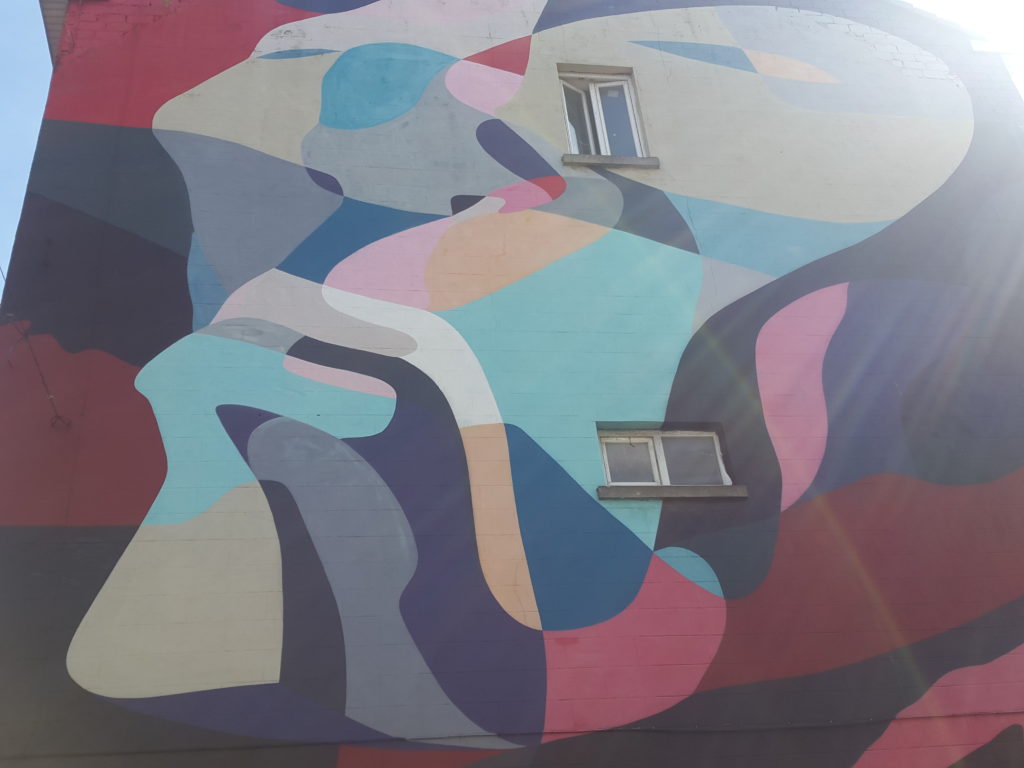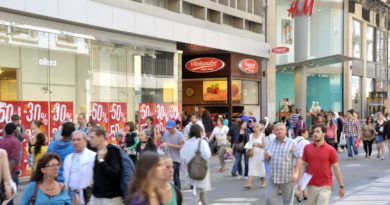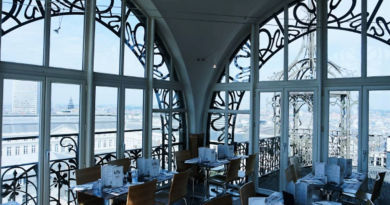Art and illegality: a peek into the marvels of Brussels’ street art scene
This morning I sat down at the kitchen table and thought hard about the question: How old was I when I saw graffiti and street art for the first time in my life? It was a memory exercise, a question that on the surface seemed trivial, even embarrassing, but the more I tried to sort through images of my childhood the less certain I became.
In the end I was able to trace it back to an old movie, Warriors, an American film about street gangs in the New York of the late seventies, early eighties. One of my older brothers, a fan of crime action films, found it at the video rental store and brought it home. I must have been four or five, and we played it on the old Betamax, both of us lying flat on our stomachs on the carpet of my parents’ TV room. On the screen appeared images of slow-moving underground trains where no space in the car had been left without tagging, sprayed symbols covering doors and windows, words that laid claim to a public space that belonged to everyone and no one.
I didn’t realize how little I knew about graffiti and street art until a few days ago, when I joined a guided walking tour along the canal organized by Fais Le Trottoir ASBL, an organization that fosters public awareness of the different forms of street art in Brussels. The meeting point was at the corner of Rue du Cheval Noir and Quai du Hainaut, on the west bank of the canal in Molenbeek, not far from the MIMA museum. The day was clear, the sun intense; cyclists rode by curious about what the group was up to.
“The origins of graffiti go back to ancient times, to Greece and Rome, even Egypt,” said Thyl, graffiti and street artist. “As we know it today, the emergence happened in Philadelphia and New York.” He mentioned Cornbread, which was the tagging name used by Darryl McCray, whose signature letters became emblematic in the Philadelphia street art of the 60’s and 70’s. There was also Taki 183, a Greek artist who also became known for his tags in the streets of New York. Graffiti’s and street art’s development, Thyl pointed out, were closely linked to that of Hip-Hop, Break Dance, and DJ music. “There’s a great book by Martha Cooper called Subway Art. You should really check it out.”
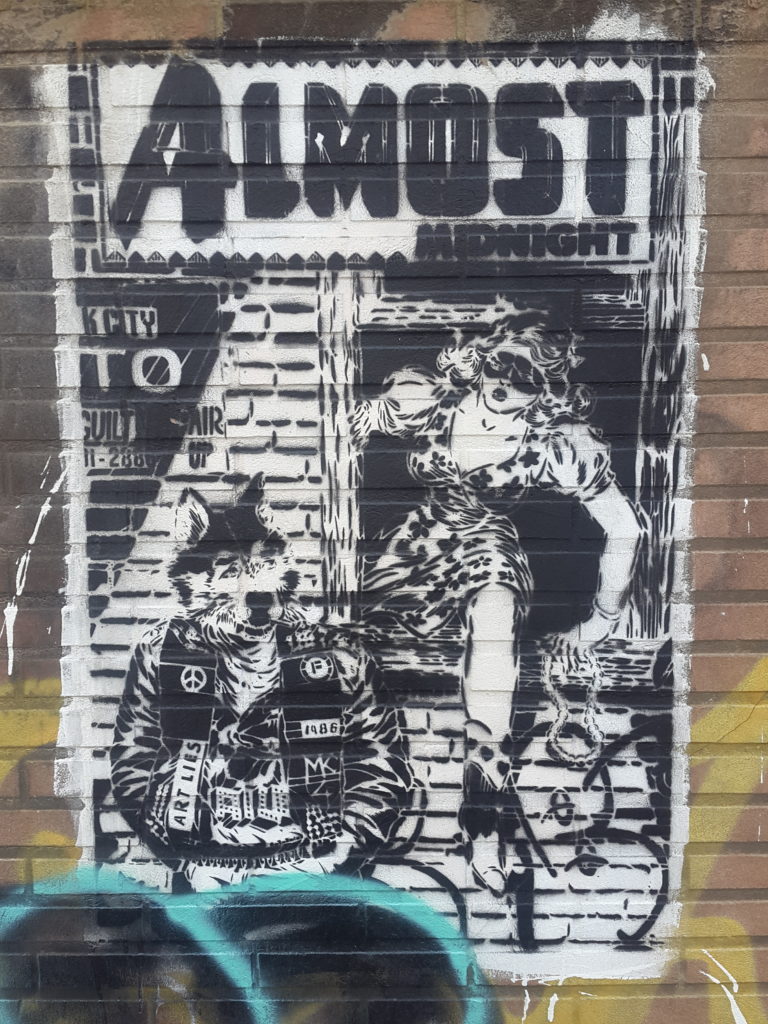
We walked on Rue du Cheval Noir, a narrow street in the shape of an L, and admired some of the art samples on the walls. “A throw up is the technique used when graffiti is filled in a rush,” explained Thyl. “You can see some examples here and here.” Over the years street art has created its own terminology. For instance, a TOY, the acronym for Troll Over You, is when an artist paints over the work of another, either deliberately or by ignorance of the established etiquette. An Angel is a respected artist who has passed away. Admirers tag their names on a wall with halos above them. One can get a glimpse of what it was like to live in the New York of the 70’s, the grim atmosphere of the underground world, in Don Delillo’s masterful story The Angel Esmeralda.
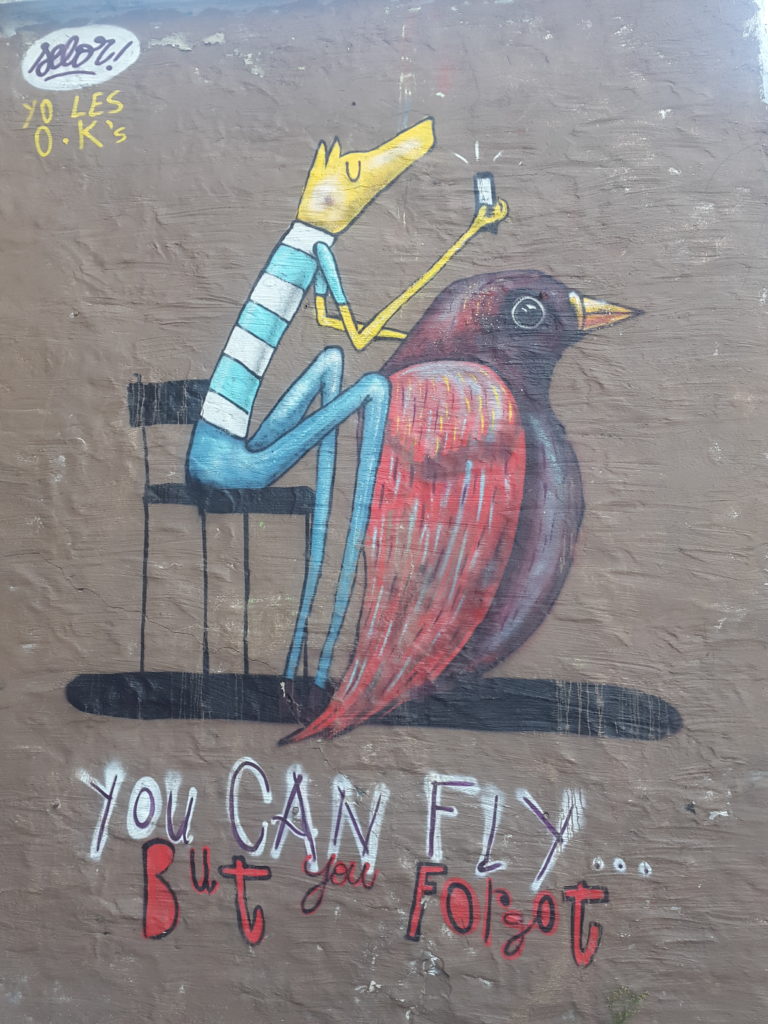
A core element of graffiti and street art is the notion of illegality. “In Brussels you can say the attitude towards street art is more or less relaxed,” said Thyl. “The fines can go from 150 to 750 Eur per tag. In Liege it’s harsher. You risk going to a court hearing from the very first time.” Arno2bal (farm-prod), another street artist and urban illustrator, commented that it’s perhaps this laissez-faire attitude that attracts so many artists from other parts of Europe. “In the summer months many of them take the train, spend a couple of months here with several like-minded people. They get a lot out of the experience.”

On the walls right next to the canal we see some of the fresques, or street art creations that have been commissioned by public authorities. In a fresque the idea of illegality is absent. We walked in the direction of Porte de Ninove and the conversation inevitably shifted to the works of Vincent Glowinski, also known as Bonom, whose street art creations both shocked and marveled the people of Brussels. “For some of his creations, the really large ones, he had to descend with a rope in what is called a Rappel technique. He was able to use both, right and left hands. Needless to say he’s really talented.” Bonom’s reputation grew large in part thanks to the erotic images that began to appear in Brussels between 2005 and 2010.
After having faced charges in 2010, Glowinski decided to turn the page and leave the story of Bonom behind. “Now he is using a technique called ‘the human brush’. His movements are recorded by a special camera, then shown to the public. All kinds of unusual shapes can be seen.”
To finish the visit we walked on Boulevard de l’Abattoir towards the South Train Station. On Rue Moretus we stopped to admire a large creation by Sozyone Gonzalez, a Belgian artist who along with Smimooz Exel founded De Puta Madre, one of the most successful hip-hop bands in Belgium. Sozyone has since then made Valencia his home but Brussels’ streets still hold dear memories of him.
